This new museum, featuring almost 300,000 works of the indigenous art and cultures of Africa, Asia, Oceania, and the Americas. essentially follows the curvature of the Quai Branly and a parallel street, the Rue de l'université. It is located in the 7th arrondissement of Paris, on the left bank of the Seine, close to the Eiffel Tower, which is visible in a number of the photographs on these pages. Designed to be unobtrusive, the main building appears shorter than the adjacent buildings, and is largely obscured from view by trees, gardens, and branch-like metal fencing. Both the long south facade and the north facades are different, this side with rust-red louvers while the north side is more colorful with boxes in primary colors extending over the garden.The long south side
|
 |
 |
 |
| |
|
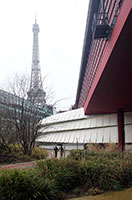 |
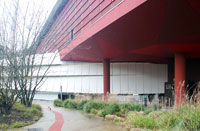 |
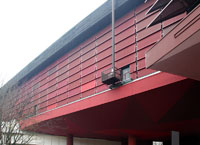 |
| |
|
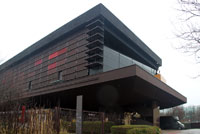 |
The southeastern endAlthough Nouvel's architecture is often unorthodox, in this museum especially he apparently wanted to depart from western traditional architecture, not wanting to impose western styles and values on a museum focussed on non-western art. |
| |
|
The northeastern end--coming around the corner to the Quai Branly
|
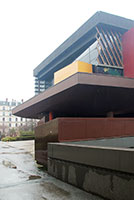 |
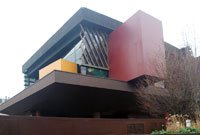 |
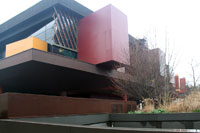 |
| |
|
Like the architecture of Le Corbusier, this building is upon pilotis, or stilts. Wikipedia explains that the structure is like a bridge, "ten meters over the garden, supported by two large concrete silos at the east and west ends and by twenty-six steel columns. As the trees of the garden around the building grow, the columns will be completely hidden and the building will appear to be resting on the treetops" (Wikipedia).
|
 |
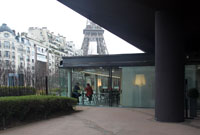 |
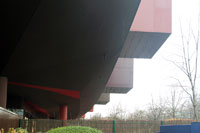 |


 Click here to return to index of art historical sites.
Click here to return to index of art historical sites.
 Click here to return to index of artists and architects.
Click here to return to index of artists and architects.
 Click here to return to chronological index.
Click here to return to chronological index.
 Click here to see the home page of Bluffton University.
Click here to see the home page of Bluffton University.

